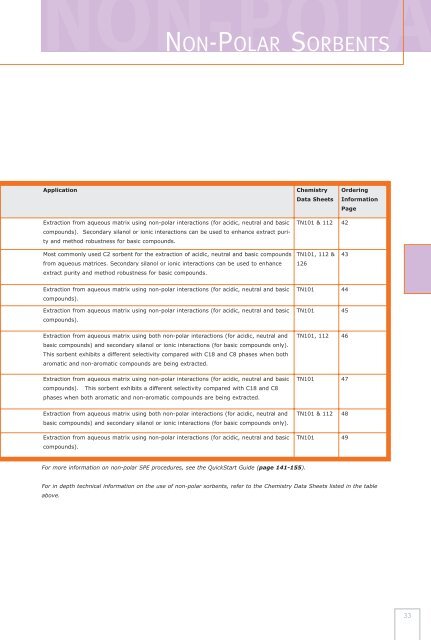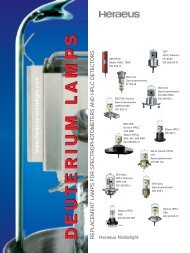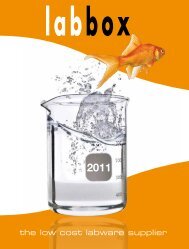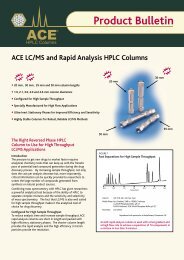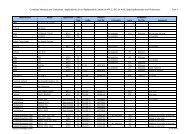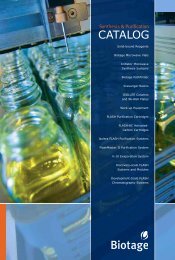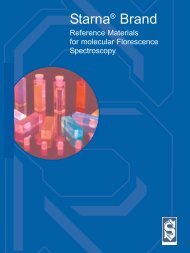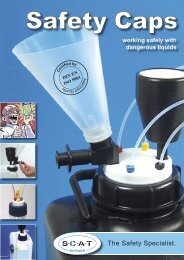PDF catalog - Teknolab AS
PDF catalog - Teknolab AS
PDF catalog - Teknolab AS
Create successful ePaper yourself
Turn your PDF publications into a flip-book with our unique Google optimized e-Paper software.
NON-POLAR SORBENTS<br />
Application<br />
Chemistry Ordering<br />
Data Sheets Information<br />
Page<br />
Extraction from aqueous matrix using non-polar interactions (for acidic, neutral and basic<br />
compounds). Secondary silanol or ionic interactions can be used to enhance extract purity<br />
and method robustness for basic compounds.<br />
TN101 & 112 42<br />
Most commonly used C2 sorbent for the extraction of acidic, neutral and basic compounds<br />
from aqueous matrices. Secondary silanol or ionic interactions can be used to enhance<br />
extract purity and method robustness for basic compounds.<br />
TN101, 112 &<br />
126<br />
43<br />
Extraction from aqueous matrix using non-polar interactions (for acidic, neutral and basic<br />
compounds).<br />
Extraction from aqueous matrix using non-polar interactions (for acidic, neutral and basic<br />
compounds).<br />
Extraction from aqueous matrix using both non-polar interactions (for acidic, neutral and<br />
basic compounds) and secondary silanol or ionic interactions (for basic compounds only).<br />
This sorbent exhibits a different selectivity compared with C18 and C8 phases when both<br />
aromatic and non-aromatic compounds are being extracted.<br />
Extraction from aqueous matrix using non-polar interactions (for acidic, neutral and basic<br />
compounds). This sorbent exhibits a different selectivity compared with C18 and C8<br />
phases when both aromatic and non-aromatic compounds are being extracted.<br />
Extraction from aqueous matrix using both non-polar interactions (for acidic, neutral and<br />
basic compounds) and secondary silanol or ionic interactions (for basic compounds only).<br />
Extraction from aqueous matrix using non-polar interactions (for acidic, neutral and basic<br />
compounds).<br />
TN101 44<br />
TN101 45<br />
TN101, 112 46<br />
TN101 47<br />
TN101 & 112 48<br />
TN101 49<br />
For more information on non-polar SPE procedures, see the QuickStart Guide (page 141-155).<br />
For in depth technical information on the use of non-polar sorbents, refer to the Chemistry Data Sheets listed in the table<br />
above.<br />
33


